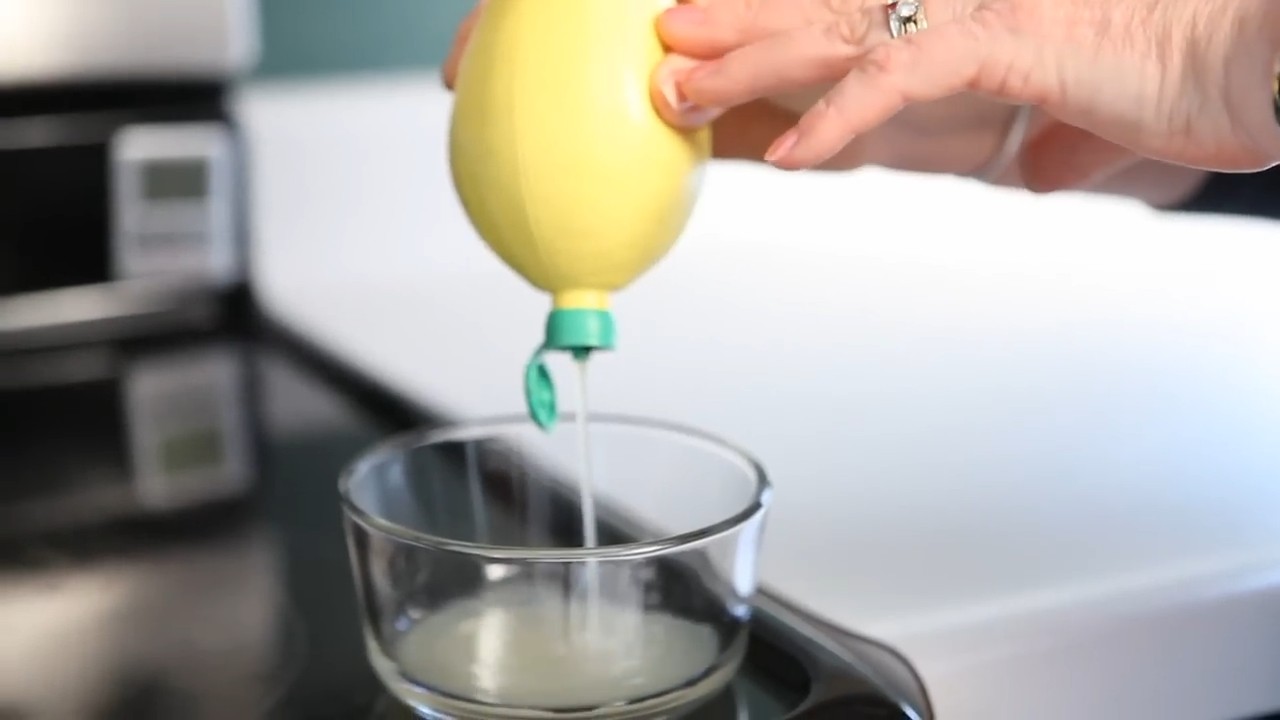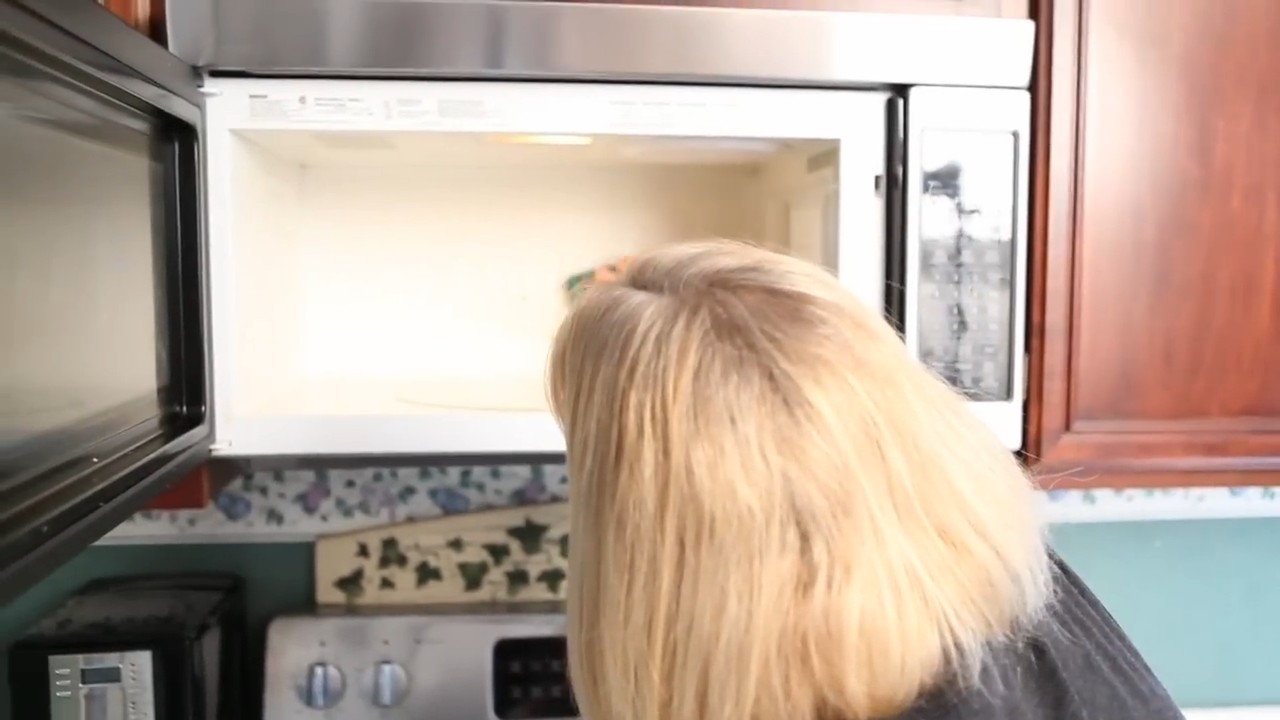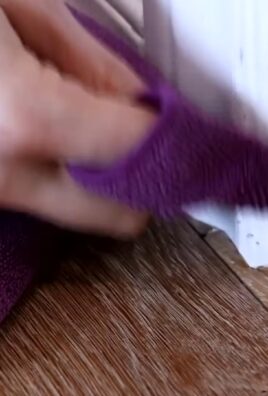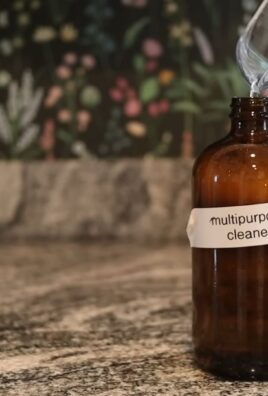Microwave cleaning with steam lemon – sounds like a spa day for your appliance, right? And honestly, after the splatters and spills of countless reheated meals, your microwave deserves a little pampering! Let’s face it, cleaning the microwave is one of those chores we all dread. It’s sticky, grimy, and requires way too much elbow grease. But what if I told you there’s a super easy, all-natural way to get your microwave sparkling clean in just minutes, using the power of steam and the fresh scent of lemon?
Believe it or not, using steam to clean dates back centuries, with ancient cultures utilizing the power of vapor for everything from saunas to sterilizing tools. Now, we’re bringing that same principle to your kitchen! This DIY trick isn’t just about cleanliness; it’s about saving time, money, and effort. Forget harsh chemicals and endless scrubbing. With this simple microwave cleaning with steam lemon method, you can effortlessly banish baked-on food and grime, leaving your microwave fresh and ready for its next culinary adventure.
I know, I know, you’re probably thinking, “Lemon? Really?” But trust me, the citric acid in lemon is a natural degreaser and disinfectant, making it the perfect weapon against microwave messes. Plus, it leaves behind a delightful, clean scent that will instantly freshen up your kitchen. So, ditch the harsh chemicals and get ready to discover the easiest, most effective way to clean your microwave. Let’s get started!

DIY Microwave Cleaning with Lemon Steam: A Sparkling Clean in Minutes!
Okay, let’s face it, cleaning the microwave is one of those chores we all dread. But what if I told you there’s a super easy, natural way to get it sparkling clean without harsh chemicals and endless scrubbing? That’s right, we’re going to harness the power of lemon and steam! This method is not only effective but also leaves your microwave smelling fresh and lemony. Trust me, you’ll never go back to scrubbing again!
What You’ll Need:
* A microwave-safe bowl (glass or ceramic works best)
* 1 lemon (fresh is ideal, but bottled lemon juice can work in a pinch)
* 1 cup of water
* A clean sponge or cloth
* Optional: A few drops of your favorite essential oil (lemon, lavender, or eucalyptus are great choices)
The Magic of Lemon Steam: Why This Works
Before we dive in, let’s quickly understand why this method is so effective. The steam loosens up all the splattered food and grime stuck to the inside of your microwave. The lemon juice acts as a natural degreaser and disinfectant, helping to break down stubborn stains and eliminate odors. It’s a win-win!
Step-by-Step Instructions:
1. Prepare the Lemon Solution: Grab your lemon and cut it in half. Squeeze the juice from both halves into your microwave-safe bowl. Don’t throw away the lemon rinds just yet! Drop them into the bowl as well. These rinds contain essential oils that will add extra cleaning power and fragrance.
2. Add Water and Essential Oils (Optional): Pour one cup of water into the bowl with the lemon juice and rinds. If you’re using essential oils, add a few drops now. I personally love adding a few drops of lemon essential oil to boost the lemony scent, but lavender or eucalyptus can also work wonders.
3. Microwave the Solution: Place the bowl in your microwave. Set the timer for 3-5 minutes on high. The goal is to bring the water to a rolling boil and create plenty of steam. Keep a close eye on it, and if the water starts to bubble over, stop the microwave and reduce the cooking time slightly next time.
4. Let it Steam: Once the timer goes off, do not open the microwave door immediately! This is crucial. Let the steam work its magic for another 5-10 minutes. This allows the steam to fully penetrate and loosen all the grime. The longer you let it sit, the easier the next step will be.
5. Carefully Remove the Bowl: After the steaming period, carefully remove the bowl from the microwave. Be cautious, as the bowl and the water will be very hot. Use oven mitts or a towel to protect your hands.
6. Wipe Down the Interior: Now comes the satisfying part! Take your clean sponge or cloth and wipe down the interior of the microwave. You’ll be amazed at how easily the grime comes off. For stubborn spots, you can dip your sponge into the remaining lemon water in the bowl for extra cleaning power.
7. Clean the Turntable and Roller Ring: Remove the turntable and roller ring from the microwave. Wash them with warm, soapy water. These parts often accumulate food splatters and can contribute to unpleasant odors. Rinse them thoroughly and dry them before placing them back in the microwave.
8. Dry the Interior: Once you’ve wiped down the entire interior, use a clean, dry cloth to dry any remaining moisture. This will help prevent water spots and leave your microwave looking extra shiny.
9. Enjoy Your Sparkling Clean Microwave! That’s it! You’ve successfully cleaned your microwave with the power of lemon and steam. Admire your handiwork and enjoy the fresh, clean scent.
Troubleshooting and Tips:
* Stubborn Stains: If you have some particularly stubborn stains, you can try making a paste of baking soda and water and applying it to the stains before microwaving the lemon solution. Let the paste sit for a few minutes before wiping it away.
* Bottled Lemon Juice: While fresh lemon is ideal, bottled lemon juice can work in a pinch. Use about 2-3 tablespoons of bottled lemon juice in place of the fresh lemon juice.
* Microwave Smells Lingering? If your microwave still has a lingering odor after cleaning, try placing a small bowl of baking soda inside and leaving it overnight. Baking soda is a natural odor absorber.
* Preventative Measures: To keep your microwave clean, try covering your food with a microwave-safe lid or plastic wrap when heating it up. This will help prevent splatters and make cleanup much easier.
* Regular Cleaning: I recommend cleaning your microwave using this method at least once a month, or more often if you use it frequently. Regular cleaning will prevent grime from building up and make the process much easier each time.
* Burnt Popcorn Smell: If you have a burnt popcorn smell, try microwaving a small bowl of vinegar and water (equal parts) for a few minutes. The vinegar will help neutralize the odor.
* Don’t Overheat: Be careful not to overheat the lemon solution in the microwave. If the water starts to bubble over excessively, stop the microwave and reduce the cooking time next time.
* Safety First: Always use oven mitts or a towel when handling hot bowls and liquids. Be careful not to burn yourself with the steam.
* Alternative to Lemon: If you don’t have a lemon, you can use vinegar as a substitute. Mix equal parts vinegar and water in the microwave-safe bowl and follow the same steps. Vinegar also works as a great degreaser and disinfectant.
* Cleaning the Outside: Don’t forget to clean the outside of your microwave as well! Use a damp cloth with a mild detergent to wipe down the exterior. Pay attention to the door handle and control panel, as these areas tend to accumulate fingerprints and grime.
* Deep Cleaning Option: For a deeper clean, after steaming, let the microwave cool slightly. Then, spray the interior with a mixture of equal parts water and white vinegar. Let it sit for a few minutes before wiping clean. The vinegar will help to further break down any remaining grease and grime.
* Check the Vent: Make sure to check the microwave vent and clean it if necessary. A clogged vent can reduce the microwave’s efficiency and potentially cause a fire hazard.
* Lemon Infused Water: After you’re done cleaning, don’t throw away the lemon water! Let it cool and then use it to water your plants. The acidic water can help to improve soil pH and provide nutrients to your plants.
* Cleaning the Rubber Seal: Pay attention to the rubber seal around the microwave door. This area can accumulate food particles and grime. Use a damp cloth or cotton swab to clean the seal thoroughly.
* Recycle the Lemon Rinds: After you’ve finished cleaning, you can compost the lemon rinds or use them to freshen up your garbage disposal. Simply toss a few rinds into the disposal and run it with cold water.
* Essential Oil Blends: Experiment with different essential oil blends to create your own signature microwave cleaning scent. Some other great combinations include lemon and tea tree, orange and clove, or grapefruit and rosemary.
A Little Extra Sparkle:
For an extra touch of sparkle, after cleaning and drying the interior, you can polish the turntable with a microfiber cloth. This will remove any lingering streaks and leave it looking brand new.
So there you have it! A simple, natural, and effective way to clean your microwave with lemon steam. Say goodbye to harsh chemicals and endless scrubbing, and hello to a sparkling clean microwave that smells amazing! Happy cleaning!

Conclusion
So, there you have it! A simple, effective, and delightfully fragrant way to banish microwave grime using nothing more than a lemon, water, and the power of steam. This DIY microwave cleaning trick is more than just a cleaning hack; it’s a mini aromatherapy session that leaves your kitchen smelling fresh and your microwave sparkling. Forget harsh chemicals and endless scrubbing – this method harnesses the natural cleaning power of lemon to loosen stubborn splatters and make wiping them away a breeze.
Why is this a must-try? Because it’s quick, inexpensive, eco-friendly, and incredibly effective. It saves you time, money, and the headache of dealing with harsh cleaning agents. Plus, who doesn’t love the invigorating scent of lemon wafting through their kitchen?
But don’t just take our word for it. Experiment with variations to find what works best for you. For a stronger cleaning punch, try adding a tablespoon of white vinegar to the water and lemon mixture. The vinegar’s acidity will further break down grease and grime. Alternatively, if you’re not a fan of lemon, you can substitute it with orange or lime slices for a different citrusy scent and similar cleaning benefits. You can even add a few drops of your favorite essential oil, like lavender or eucalyptus, for an extra boost of fragrance. Just be sure to use essential oils that are safe for microwave use.
Another variation involves using lemon juice instead of lemon slices. Simply squeeze the juice of half a lemon into the water before microwaving. This is a great option if you don’t have a fresh lemon on hand.
The beauty of this DIY microwave cleaning method lies in its simplicity and adaptability. It’s a cleaning solution that you can customize to your preferences and needs.
We’re confident that once you try this steam lemon microwave cleaning trick, you’ll be amazed by the results. It’s a game-changer for anyone who wants a clean microwave without the hassle of traditional cleaning methods.
So, ditch the harsh chemicals and embrace the power of lemon steam! Give this DIY trick a try and let us know what you think. Share your experiences, variations, and tips in the comments below. We’re eager to hear how this method works for you and any creative twists you add to it. Happy cleaning!
Frequently Asked Questions (FAQs)
Q: How often should I clean my microwave using the steam lemon method?
A: The frequency depends on how often you use your microwave and how messy it gets. As a general guideline, cleaning it once a week is a good practice to prevent buildup and maintain a fresh-smelling microwave. If you frequently reheat messy foods, you might want to clean it more often, perhaps every few days. Conversely, if you rarely use your microwave, cleaning it every two weeks might suffice. The key is to observe how quickly splatters and odors accumulate and adjust your cleaning schedule accordingly.
Q: Can I use a plastic bowl instead of a microwave-safe glass bowl?
A: While it’s generally safe to use microwave-safe plastic bowls, we strongly recommend using a microwave-safe glass bowl for this steam cleaning method. Glass is less likely to leach chemicals into the water during heating, ensuring a cleaner and safer cleaning process. Some plastics can warp or melt at high temperatures, potentially releasing harmful substances. To avoid any risks, opt for a glass bowl specifically designed for microwave use.
Q: What if I don’t have a lemon? Can I use something else?
A: Absolutely! While lemon is the star of this cleaning trick, you can substitute it with other citrus fruits like oranges, limes, or even grapefruit. These fruits contain similar acids that help loosen grime and leave a pleasant scent. If you don’t have any citrus fruits on hand, you can also use a tablespoon of white vinegar in the water. Vinegar is a powerful cleaning agent that effectively breaks down grease and odors. However, be aware that vinegar has a stronger smell than citrus fruits, so you might want to ventilate your kitchen while cleaning.
Q: The grime is really stubborn. What can I do?
A: For particularly stubborn grime, try a few things. First, ensure the water and lemon mixture is boiling vigorously in the microwave. If it’s not, increase the microwave time by a minute or two. Second, after the microwaving process, let the steam sit inside the microwave for a longer period, perhaps 5-10 minutes, to further loosen the grime. Finally, when wiping down the microwave, use a slightly abrasive sponge or cloth, but be careful not to scratch the interior. You can also try making a paste of baking soda and water and applying it to the stubborn spots before wiping.
Q: My microwave smells like lemon now. How do I get rid of the smell?
A: The lemon scent should dissipate naturally within a few hours. To speed up the process, you can leave the microwave door open for a while to allow fresh air to circulate. You can also place a bowl of baking soda inside the microwave overnight to absorb any lingering odors. Baking soda is a natural odor absorber and will help neutralize any remaining lemon scent.
Q: Is this method safe for all types of microwaves?
A: This steam lemon microwave cleaning method is generally safe for most types of microwaves. However, it’s always a good idea to consult your microwave’s user manual to ensure there are no specific cleaning instructions or warnings. If you have a microwave with a stainless steel interior, be extra careful when wiping down the surfaces to avoid scratching.
Q: Can I use essential oils instead of lemon?
A: While you can add a few drops of essential oil to the water for fragrance, it’s important to use essential oils that are safe for microwave use and food contact surfaces. Some essential oils can be flammable or toxic if ingested. Lemon essential oil is a safe and effective option, as it contains similar cleaning properties to fresh lemon. Other safe options include orange, grapefruit, and tea tree oil. However, always use essential oils sparingly and ensure they are properly diluted in the water.
Q: What type of cloth should I use to wipe down the microwave?
A: A microfiber cloth is ideal for wiping down the microwave after the steam cleaning process. Microfiber cloths are highly absorbent and effectively remove dirt and grime without scratching the surfaces. You can also use a soft, non-abrasive sponge or cloth. Avoid using harsh scouring pads or abrasive cleaners, as they can damage the interior of your microwave.
Q: Can I use this method to clean the outside of my microwave?
A: While this method is primarily designed for cleaning the interior of the microwave, you can use the same lemon-infused water to clean the outside surfaces. Simply dip a cloth into the water and wipe down the exterior of the microwave. Be sure to dry the surfaces thoroughly to prevent water spots. For stubborn stains on the outside of the microwave, you can use a mild dish soap and water solution.





Leave a Comment